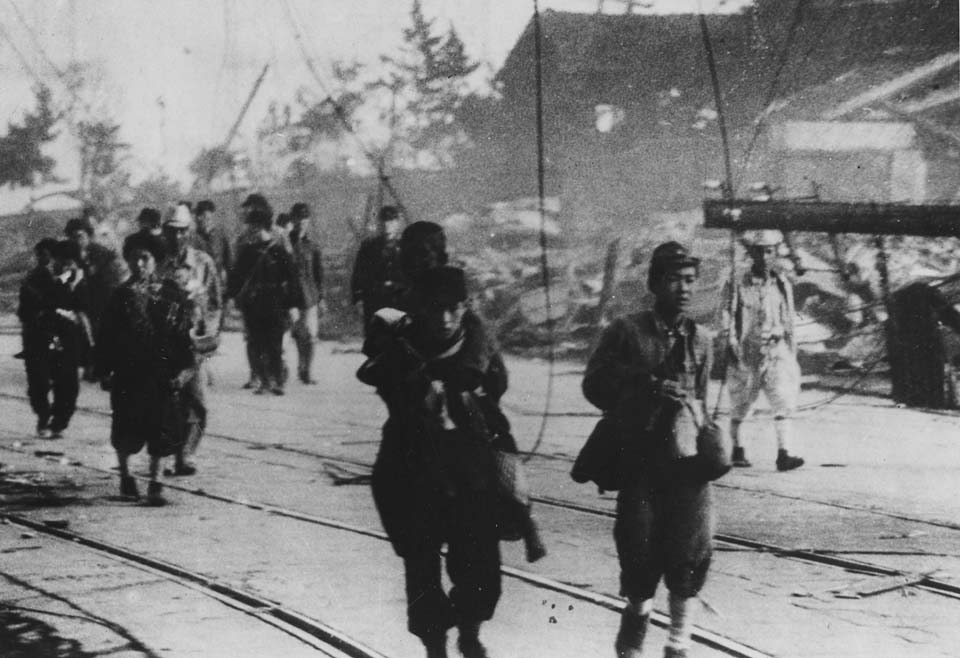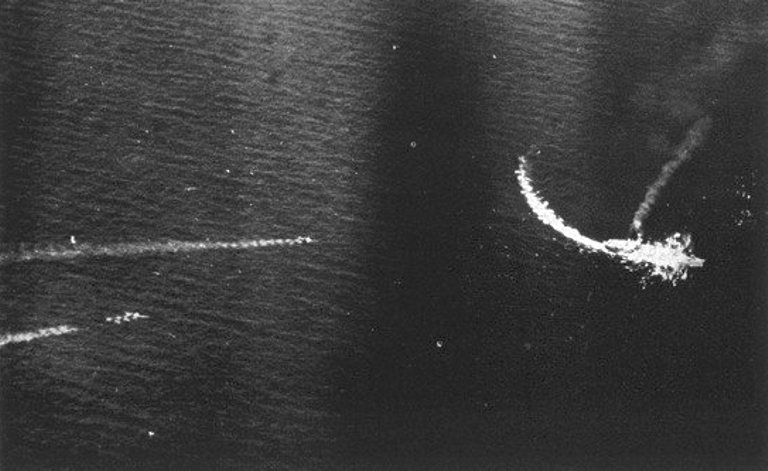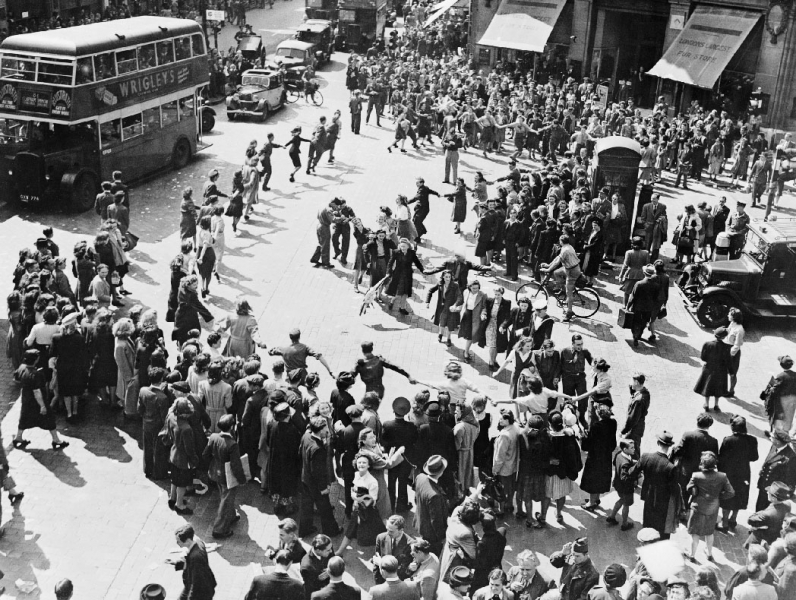Air Operations, CBI
CHINA
- 5 341st Medium Bomb Group B-25s and nearly 60 14th Air Force fighter-bombers attack numerous military and transportation targets in southern and eastern China.
[  | |  ] ]
Air Operations, Formosa FEAF B-24s attack Shinchiku.
[  | |   ] ]
Air Operations, Japan - 70 314th Very Heavy Bomb Wing B-29s attack an arsenal in Tokyo.
- 80 FEAF B-24s, 118 B-25s and A-26s, and more than 220 P-38s and P-47s attack targets in the Kumamoto area.
- More than 20 FEAF B-24s attack targets in the Oita area.
- Nearly 40 FEAF B-25s attack Japanese warships and shipping during a sweep of waters between Kyushu and Korea.
- FEAF P-47s attack the harbor at Sasebo.
- FEAF P-51s attack targets of opportunity on Honshu and Kyushu.
- Task Force 38 carrier aircraft complete the destruction of a large concentration of transport aircraft and bombers in the Hokkaido-northern Honshu area. In the two-day action, US Navy pilots claim the destruction of 720 aircraft, all on the ground. Among the carrier aircraft taking part in the day’s strikes are Corsairs of the Royal Canadian Navy’s 1841 Squadron off HMS Formidable. These are the only Canadian aircraft to undertake carrier-based combat sorties in World War II.
- 15th and 506th Fighter group P-51s down 7 Japanese fighters over the Tokyo area between 1020 and 1120 hours.
- During the night 504th Very Heavy Bomb Group B-29s sow mines in Shimonoseki Strait, Nakaumi Lagoon, and off Sakai and Yonago.
[  | |   ] ]
Air Operations, Korea During the night 504th Very Heavy Bomb Group B-29s sow mines off Wonsan.
[  | < | < ] ]
CBI
CHINA
Maj-Gen Charles B. Stone III assumes command of the 14th Air Force, replacing Maj-Gen Claire L. Chennault.
[  | |   ] ]
Diplomatic Relations Japan informs the Allies through a radio message that it accepts the terms of the Potsdam Declaration 'on the understanding that it does not comprise any demand which prejudices the prerogative of the Emperor as sovereign ruler'.
[  | |   ] ]
Japan, Home Front Emperor Hirohito tells the Japanese Government that he wishes to accept the terms of the Potsdam Declaration, and to announce Japan's unconditional surrender to the Allies.
[  | |   ] ]
Pacific - US and British battleships pound the Japanese coastal city of Kamaishi, concentrating on the steel mills.
- The Japanese minesweeper W-1 is sunk by US carrier-based aircraft off northern Honshu, Japan.
- USAAF B-29-laid mines sink the merchant cargo ship Shinjo Maru off Hime Jima.
- US Army aircraft sink the Japanese transport No. T-21 in the Inland Sea, Japan.
[  | |   ] ]
Images from August 10, 1945
Nagasaki Survivors
|
 |
|
Smoldering Ruins of Nagasaki
|
 |
|
Attacking a Japanese Ship off Honshu
|
 |
|
Celebrating V-J Day in London
|
 |
|
|



